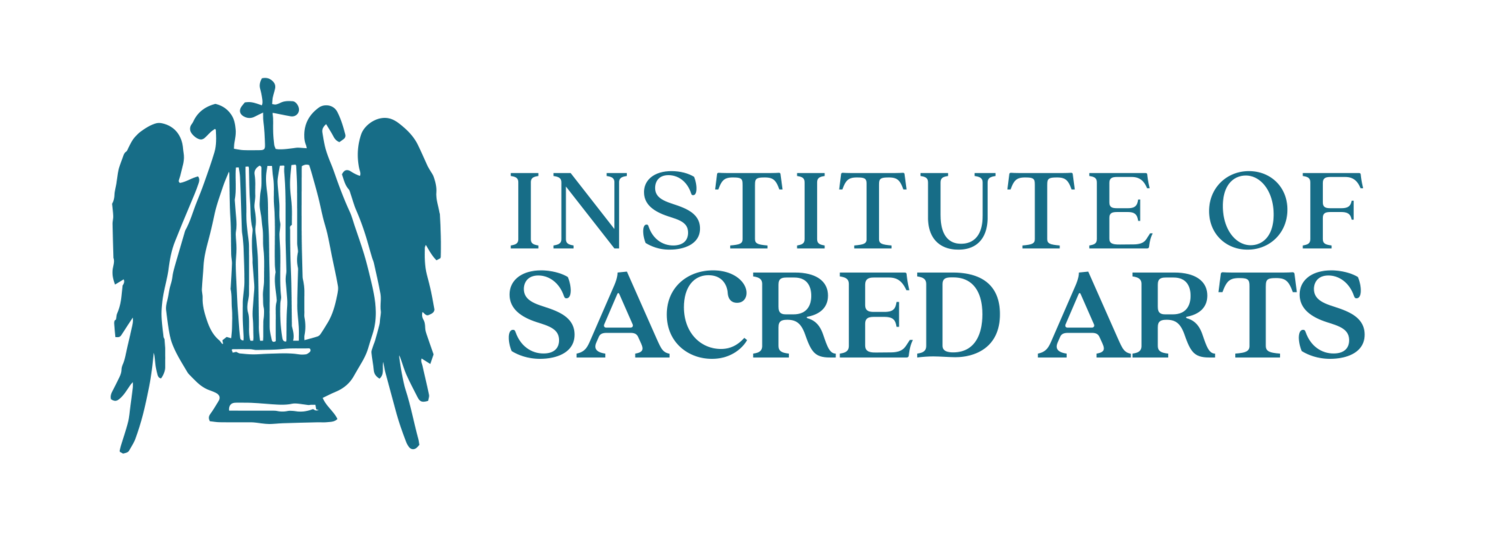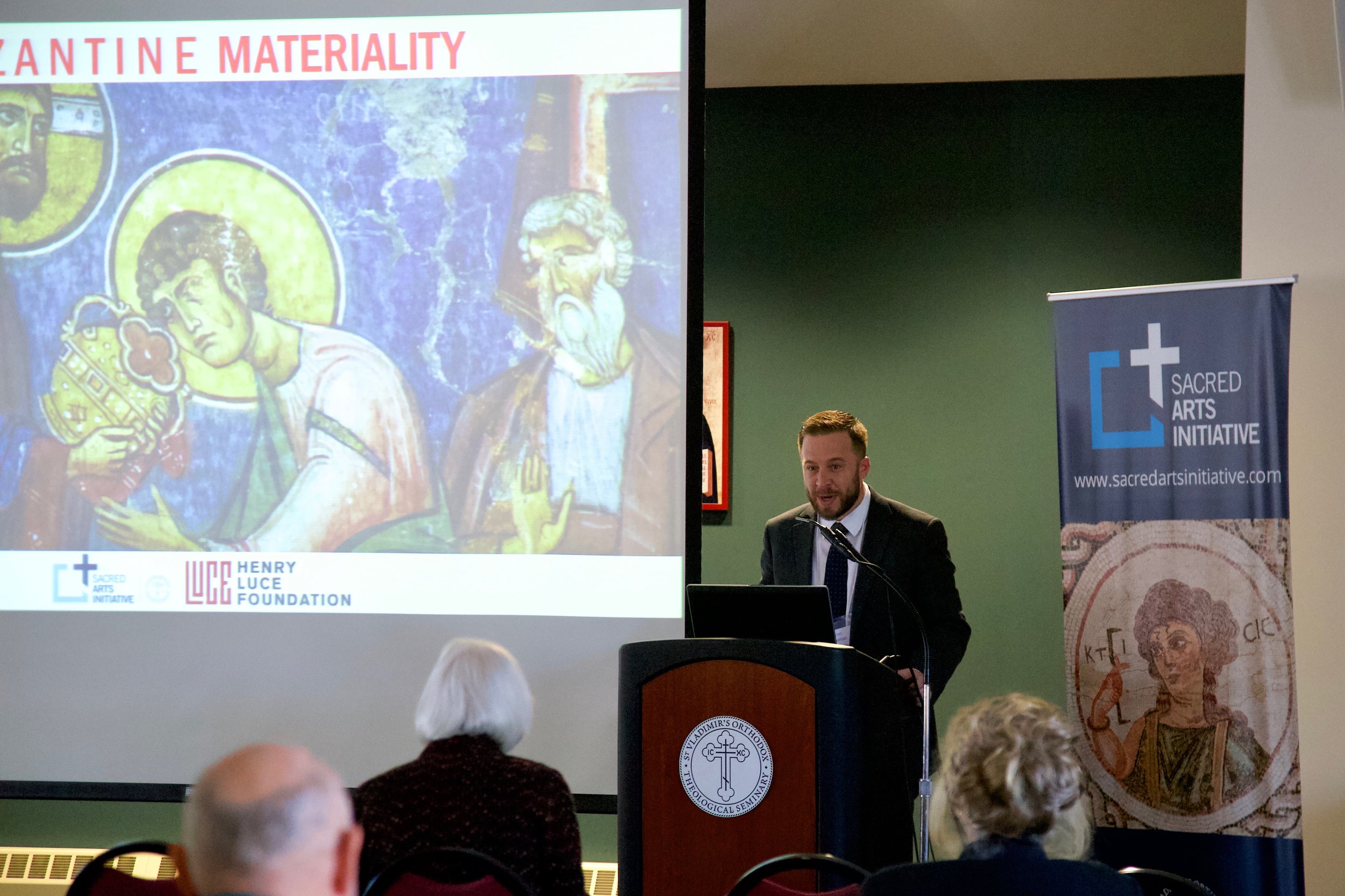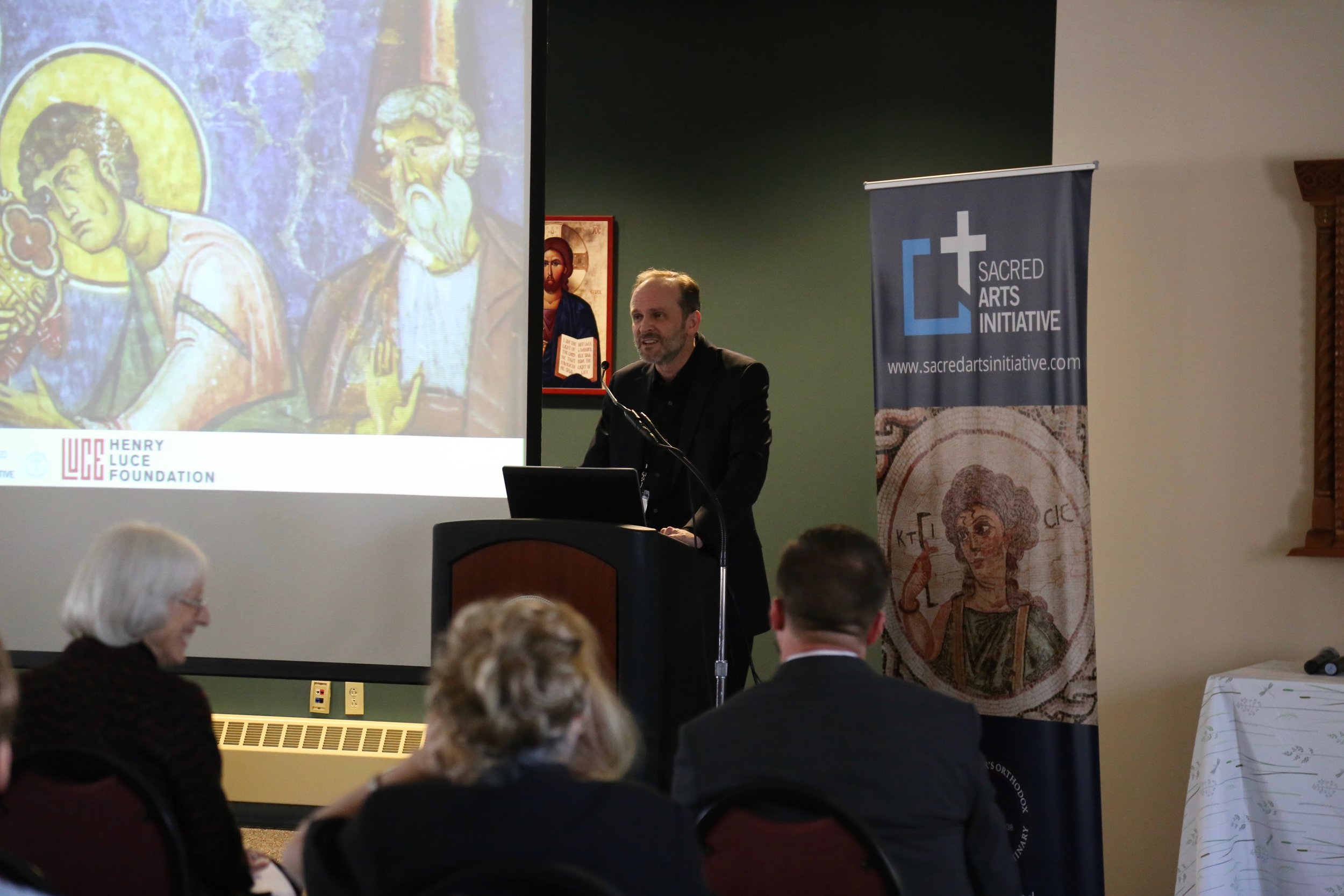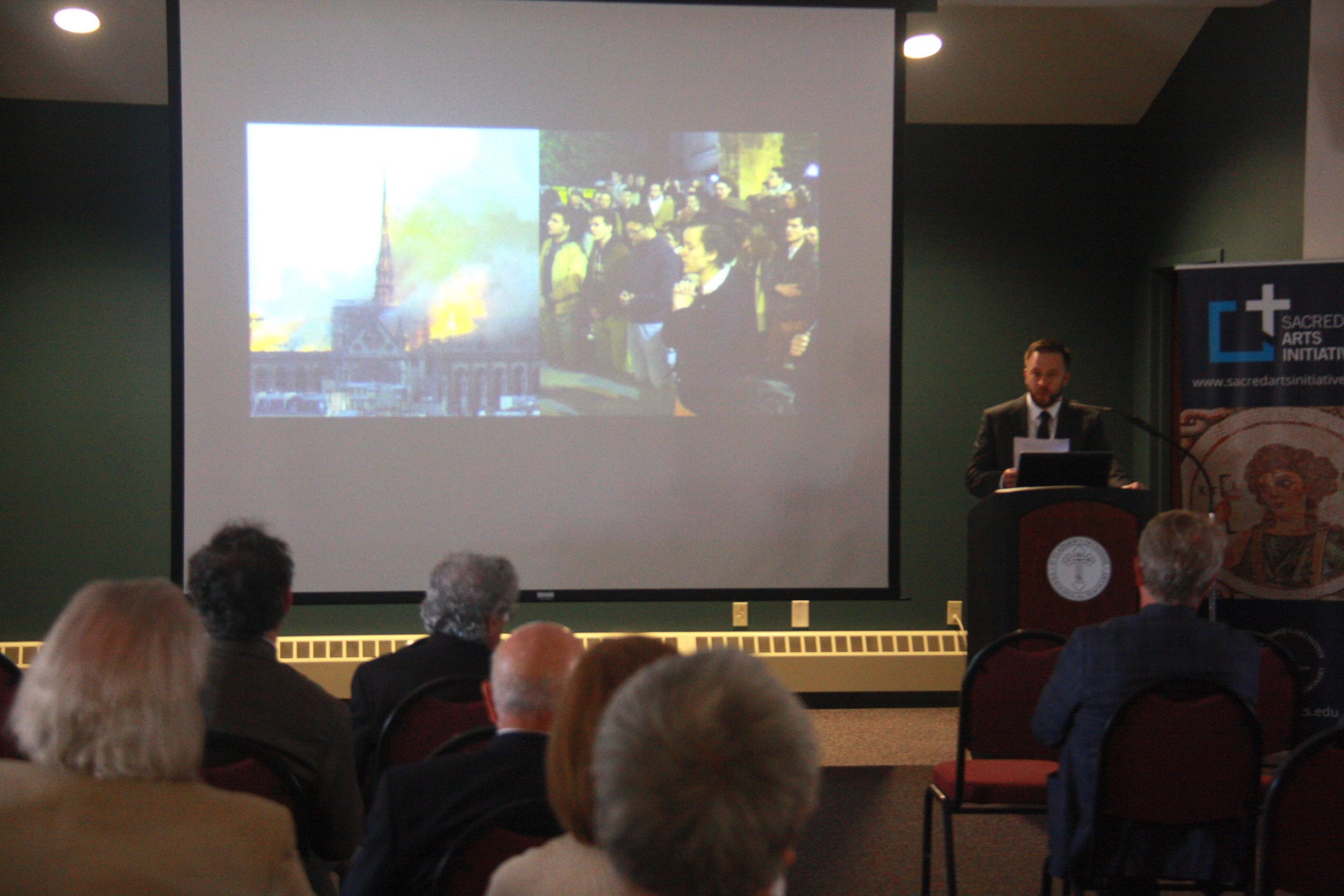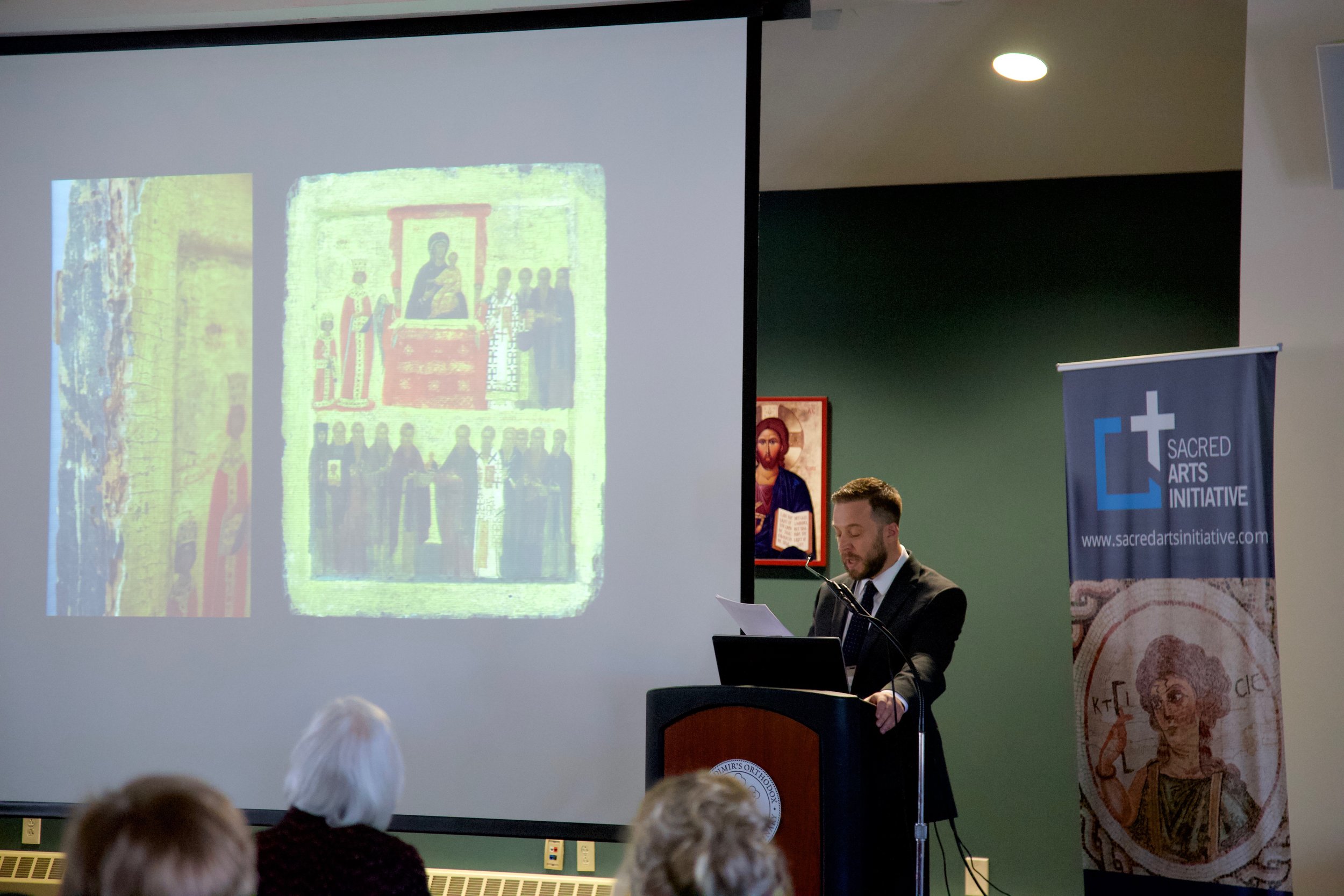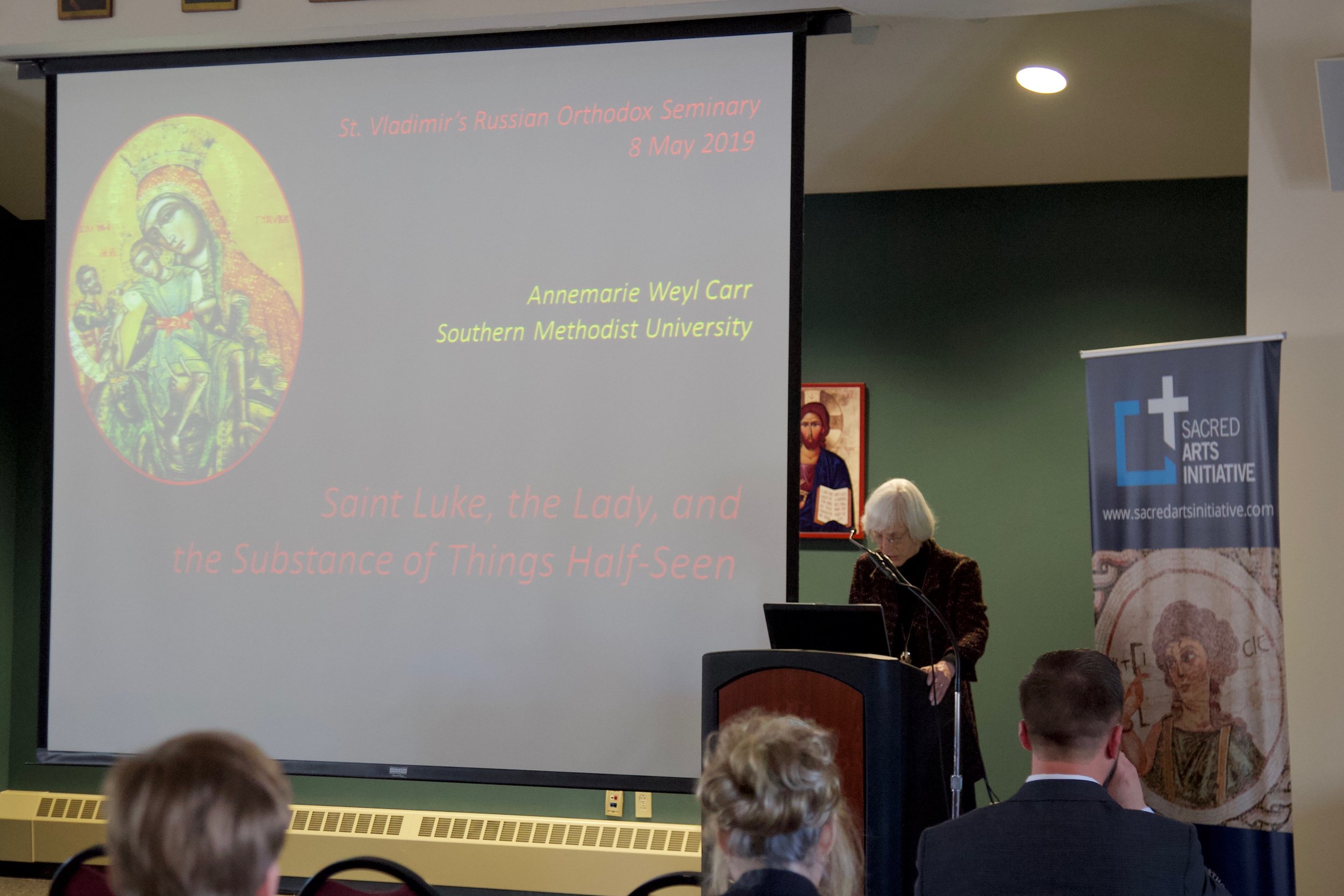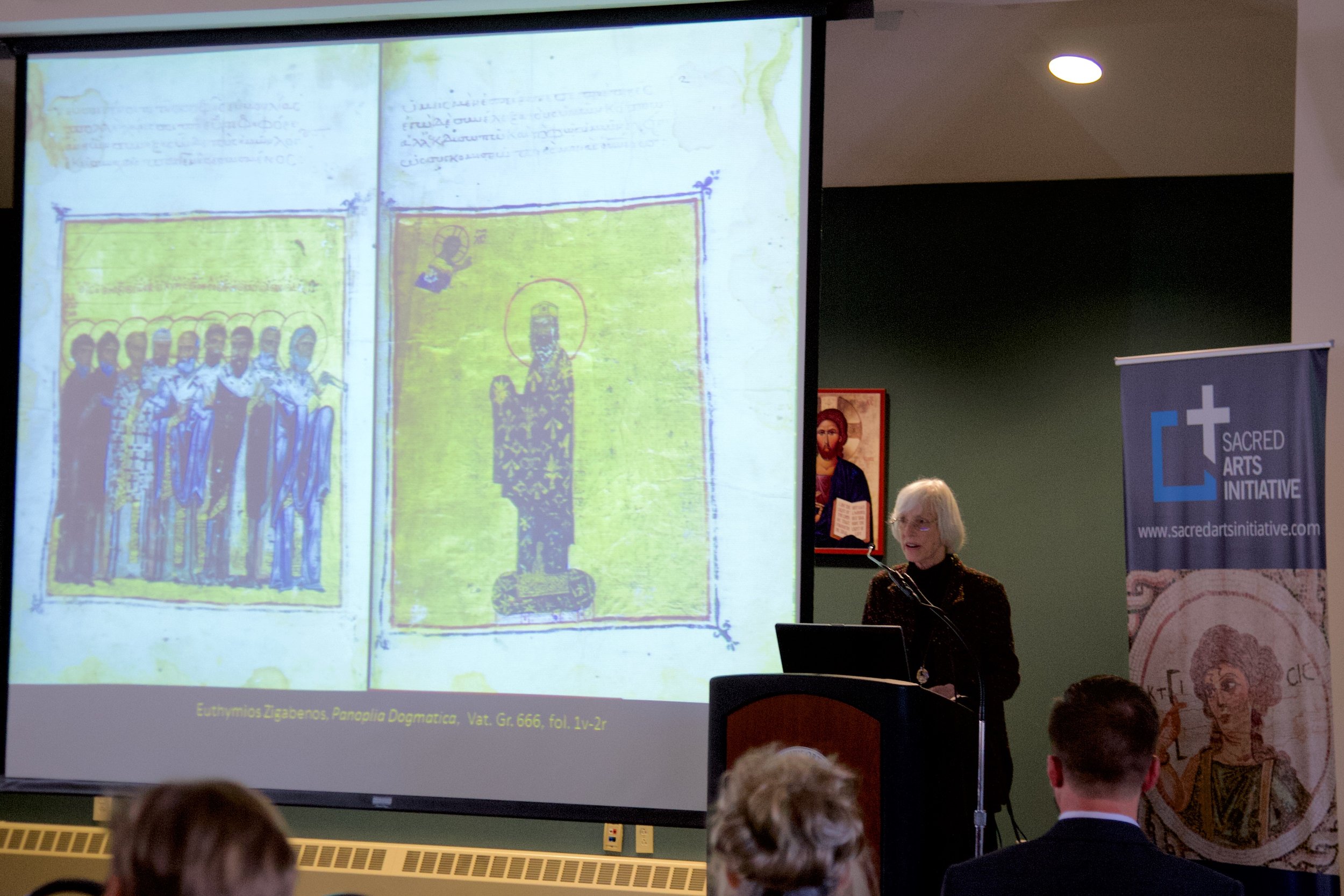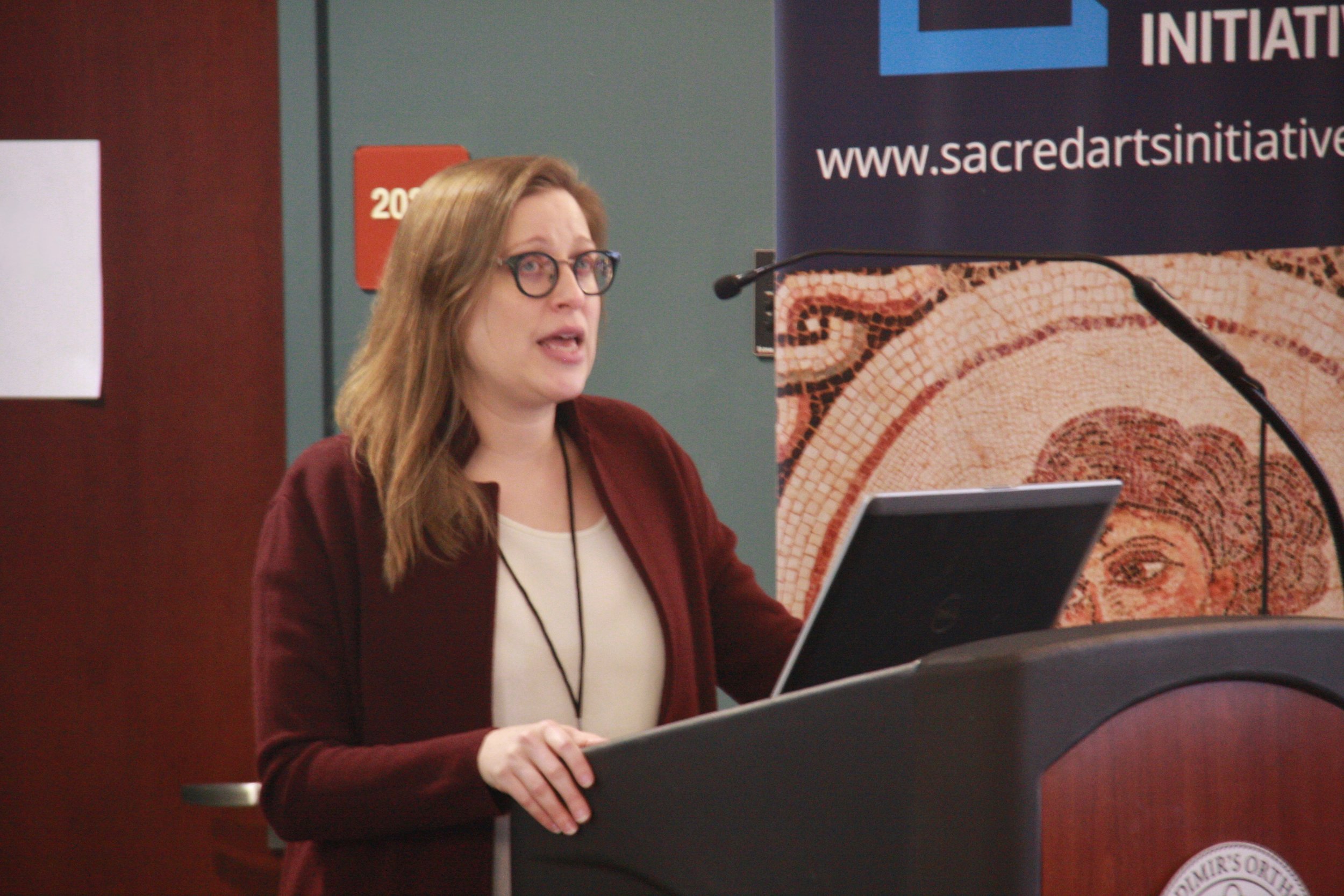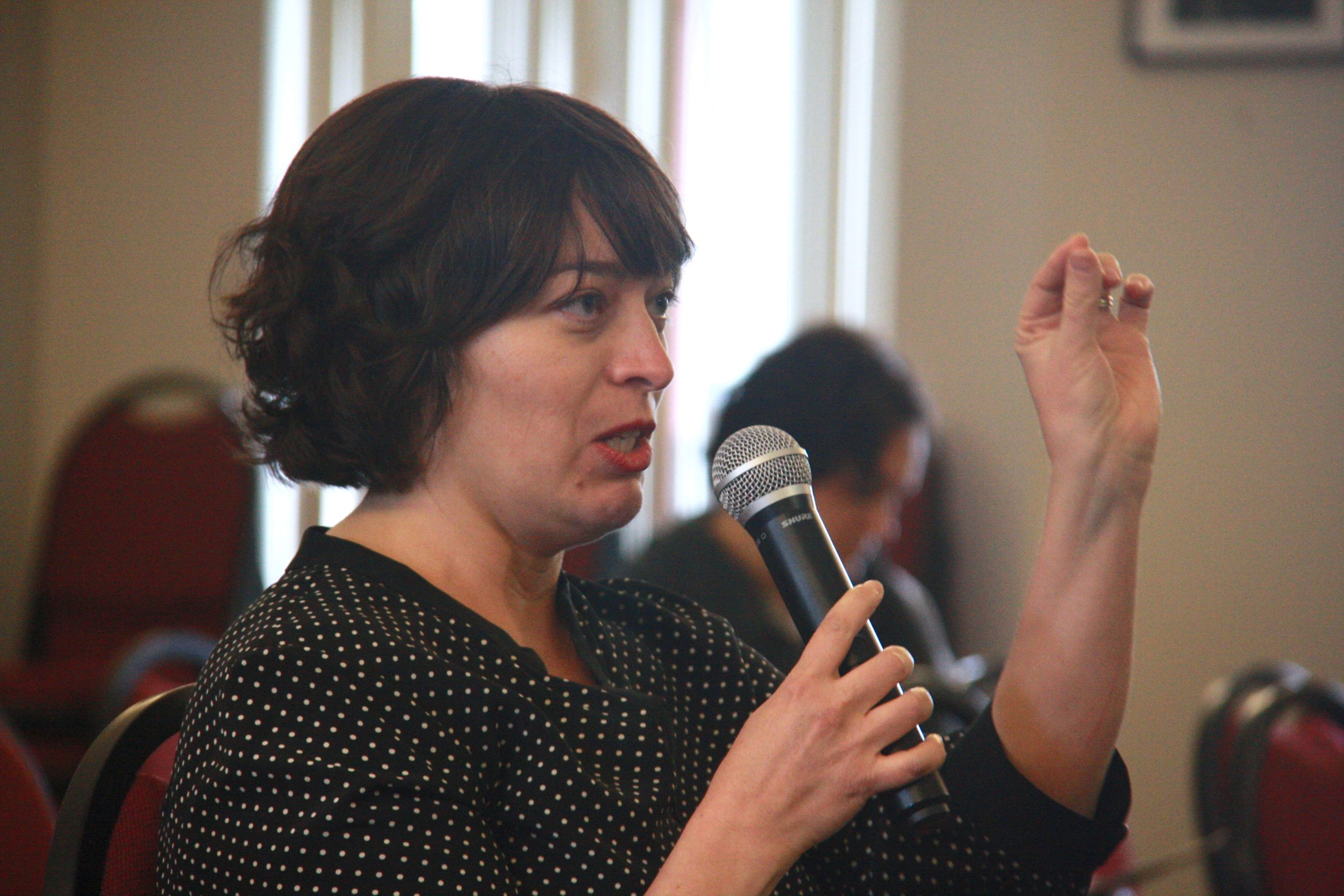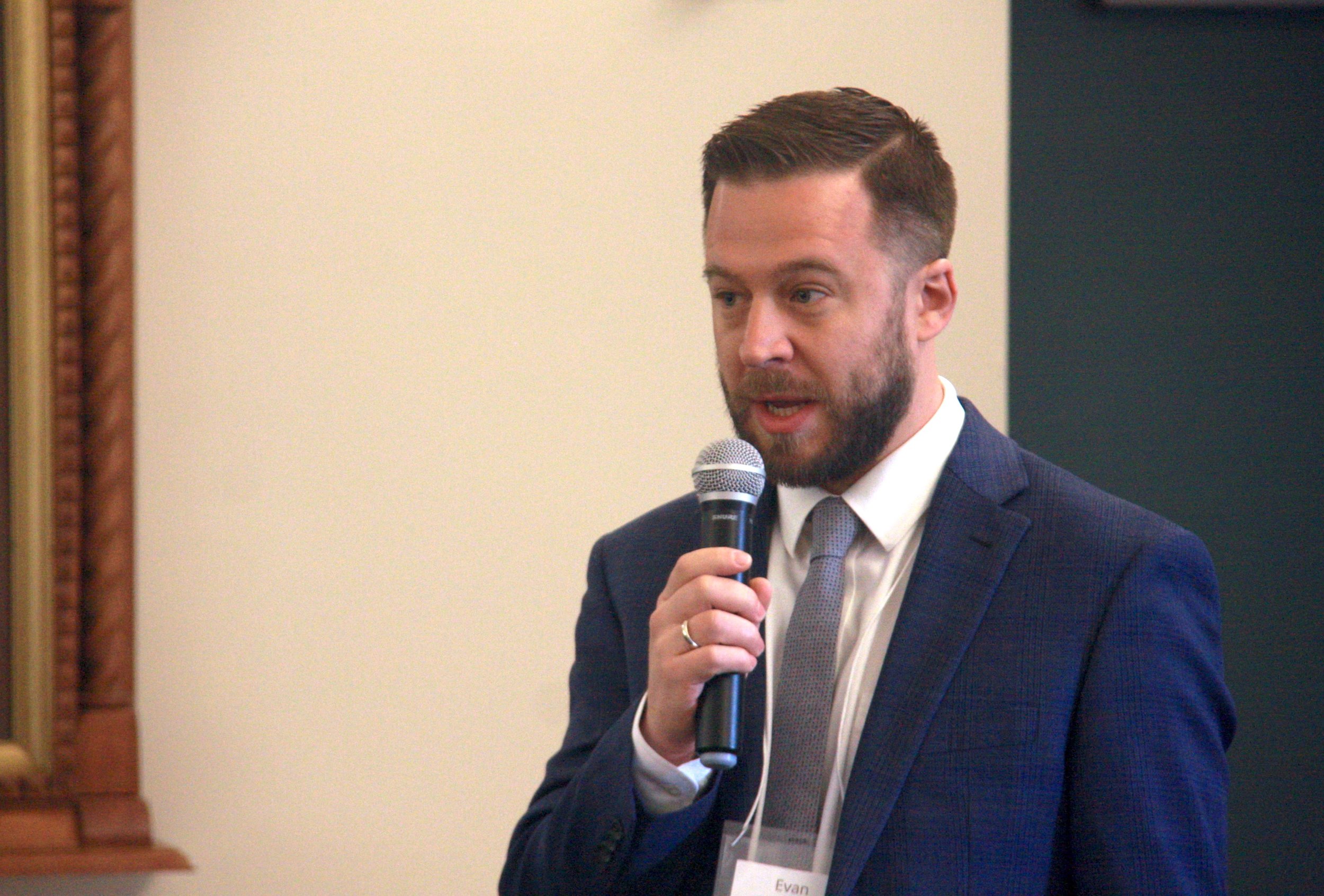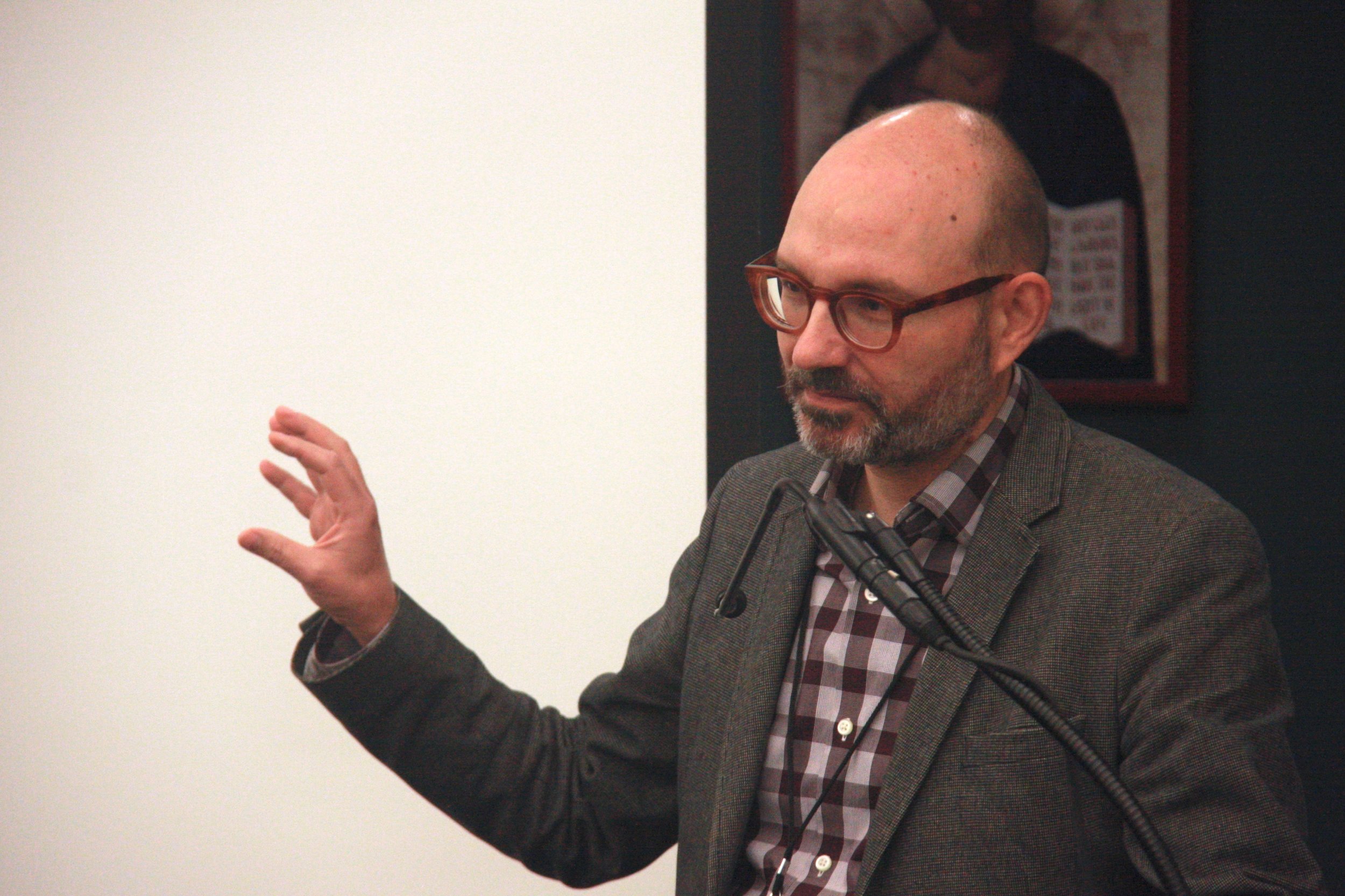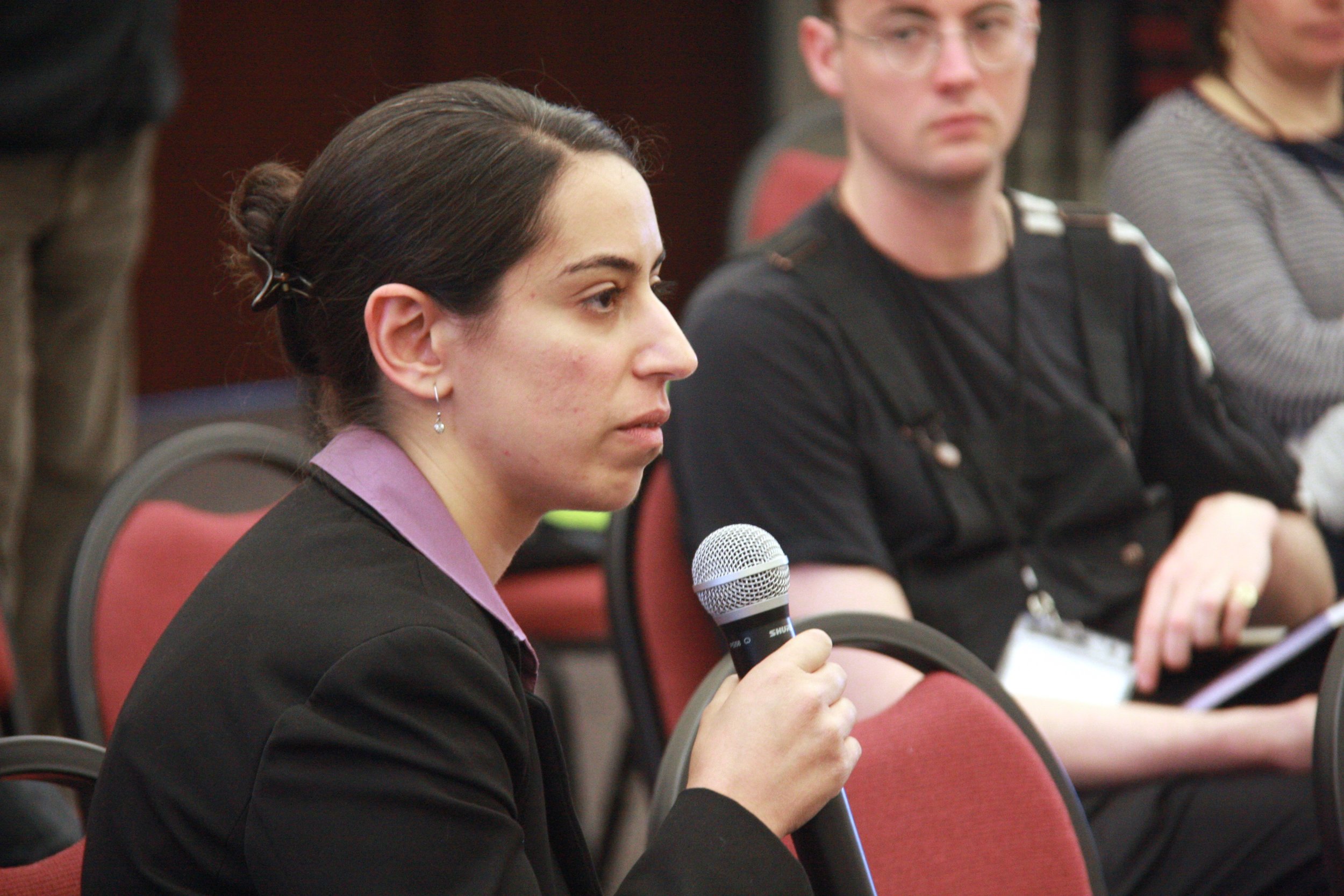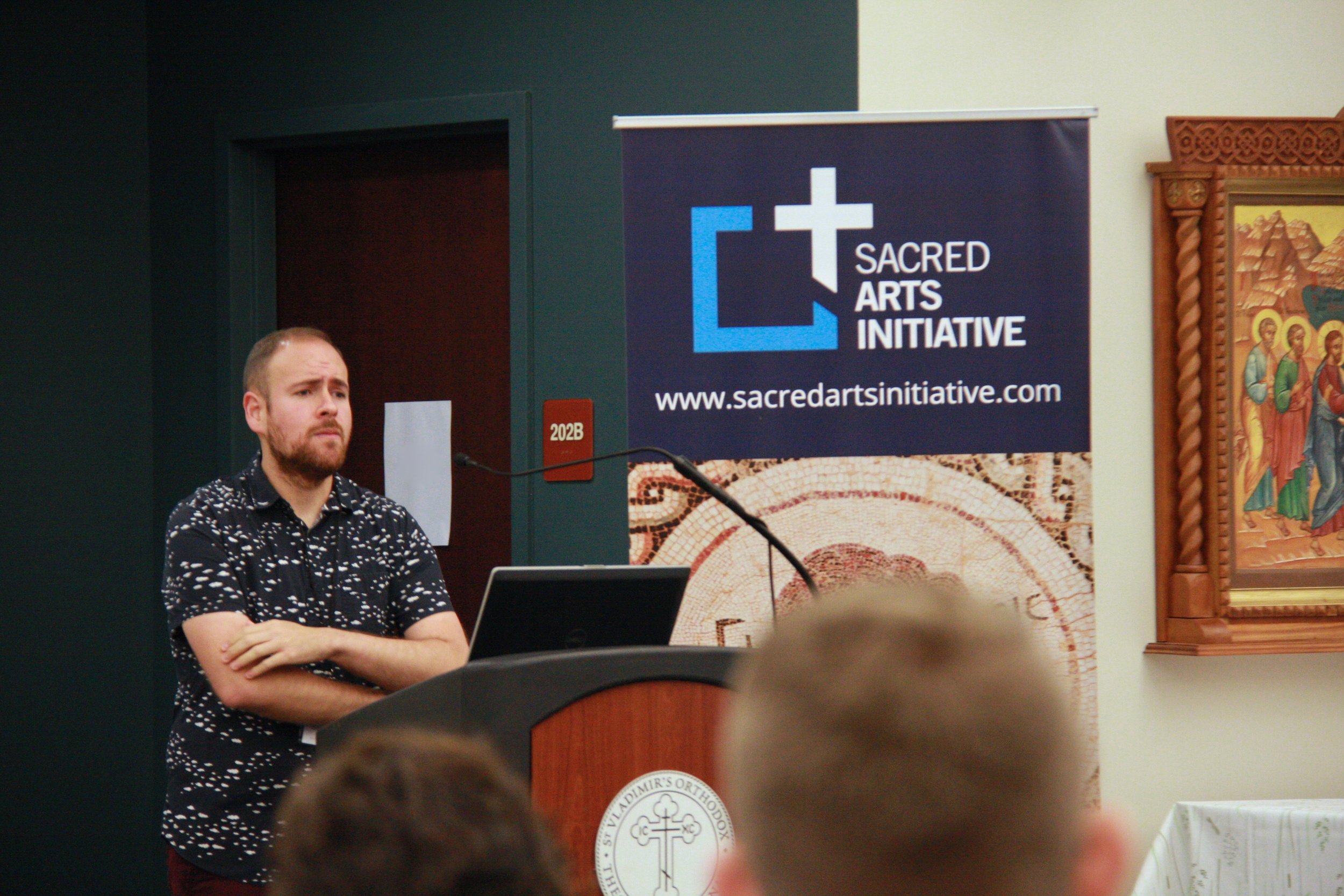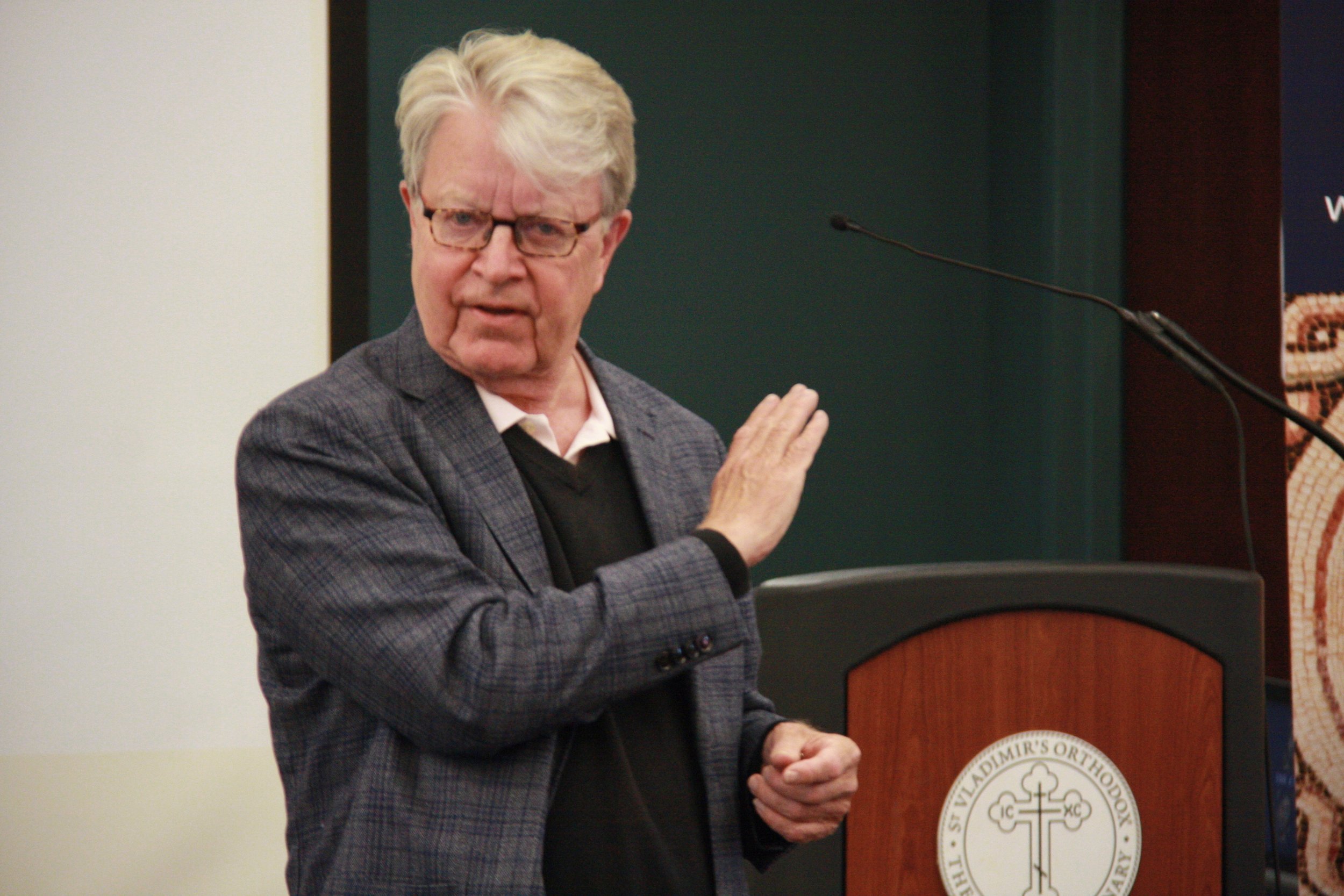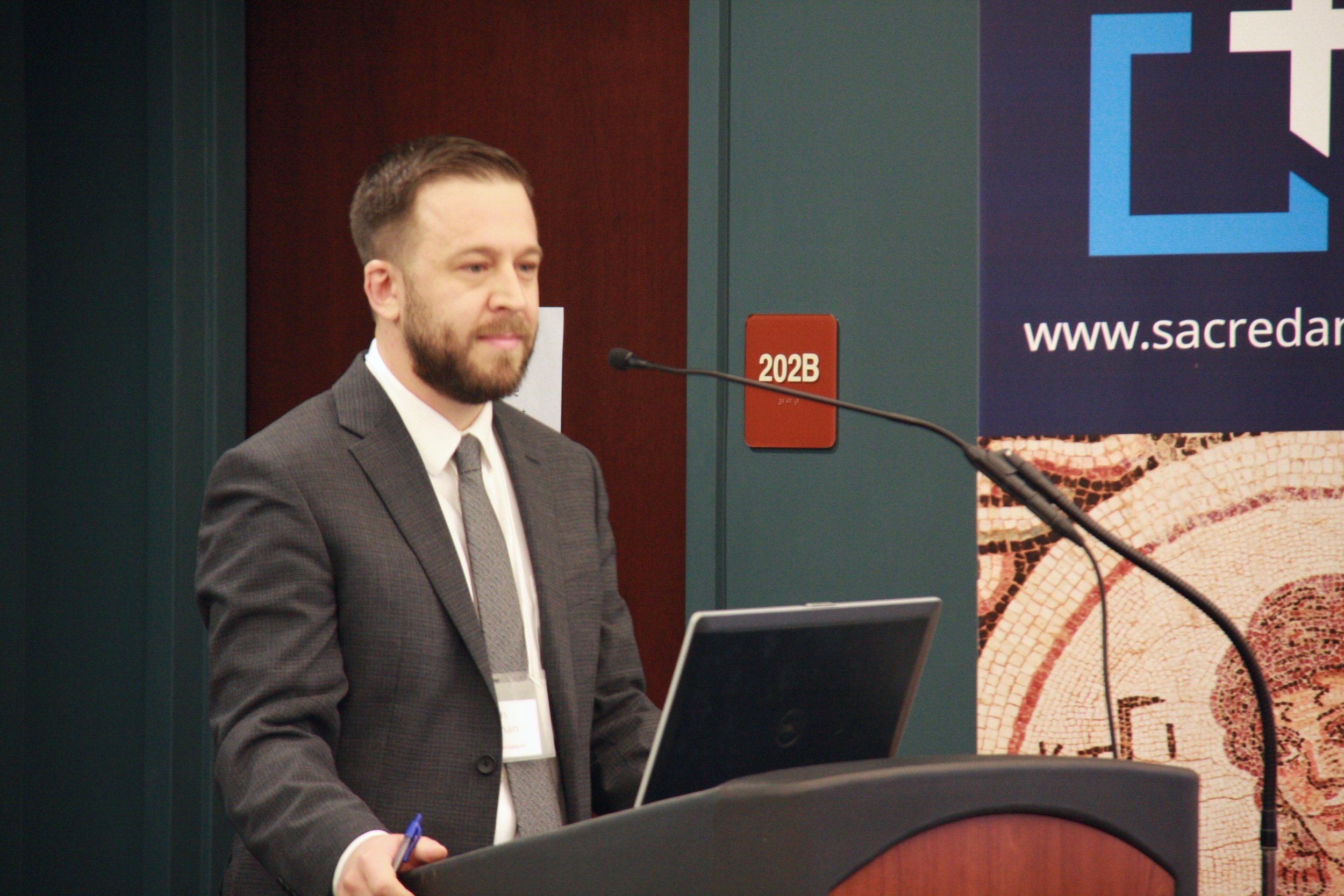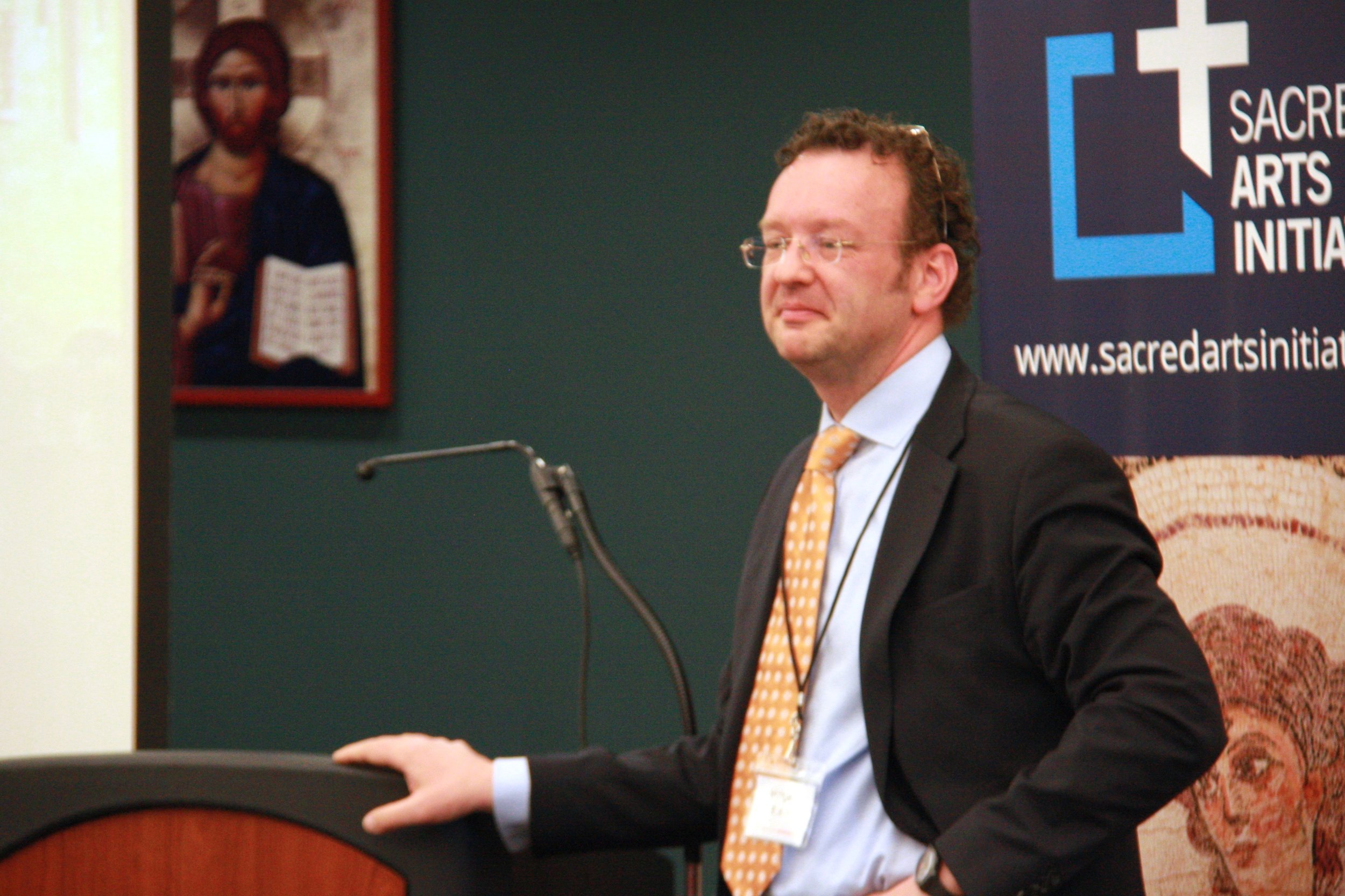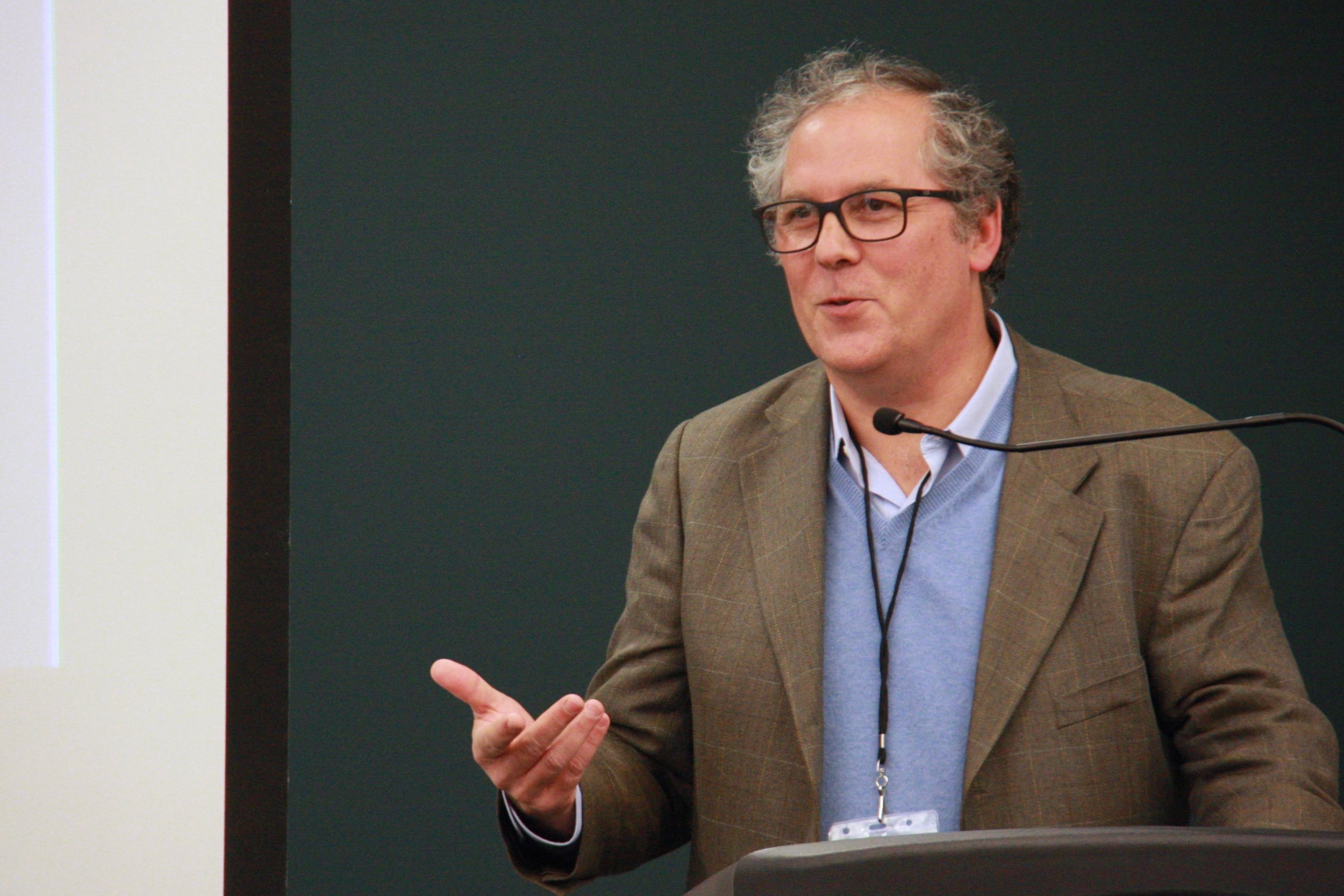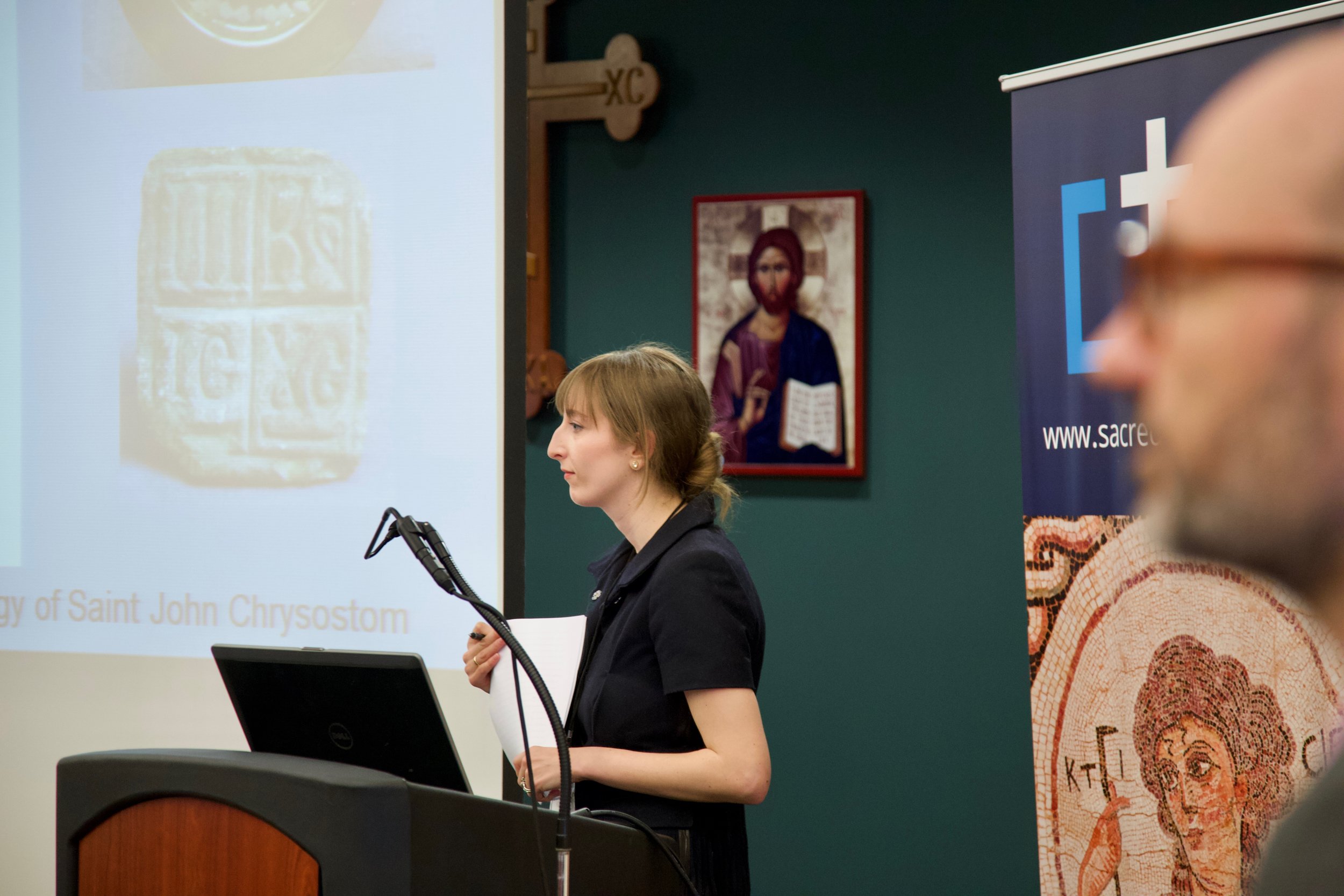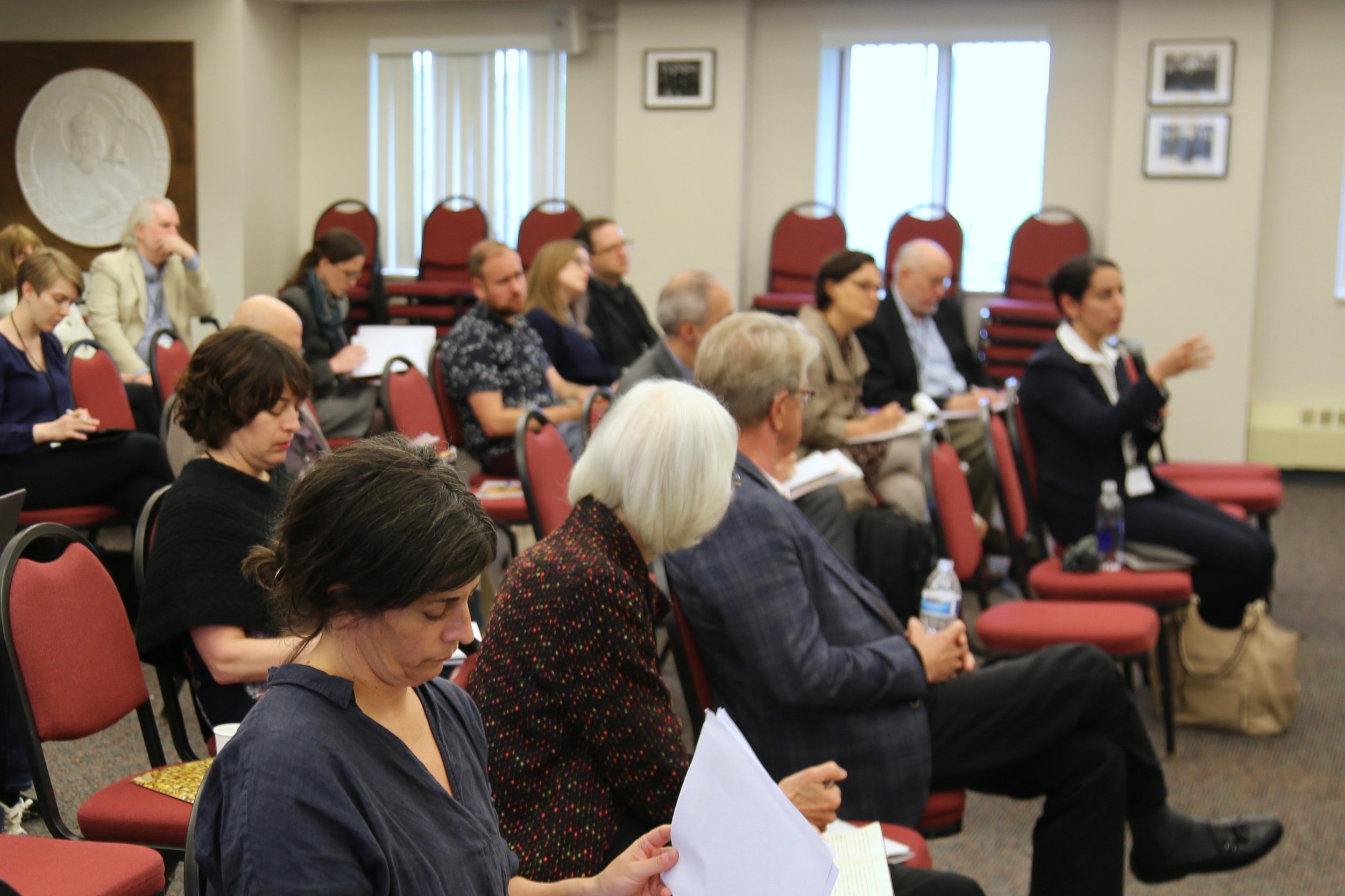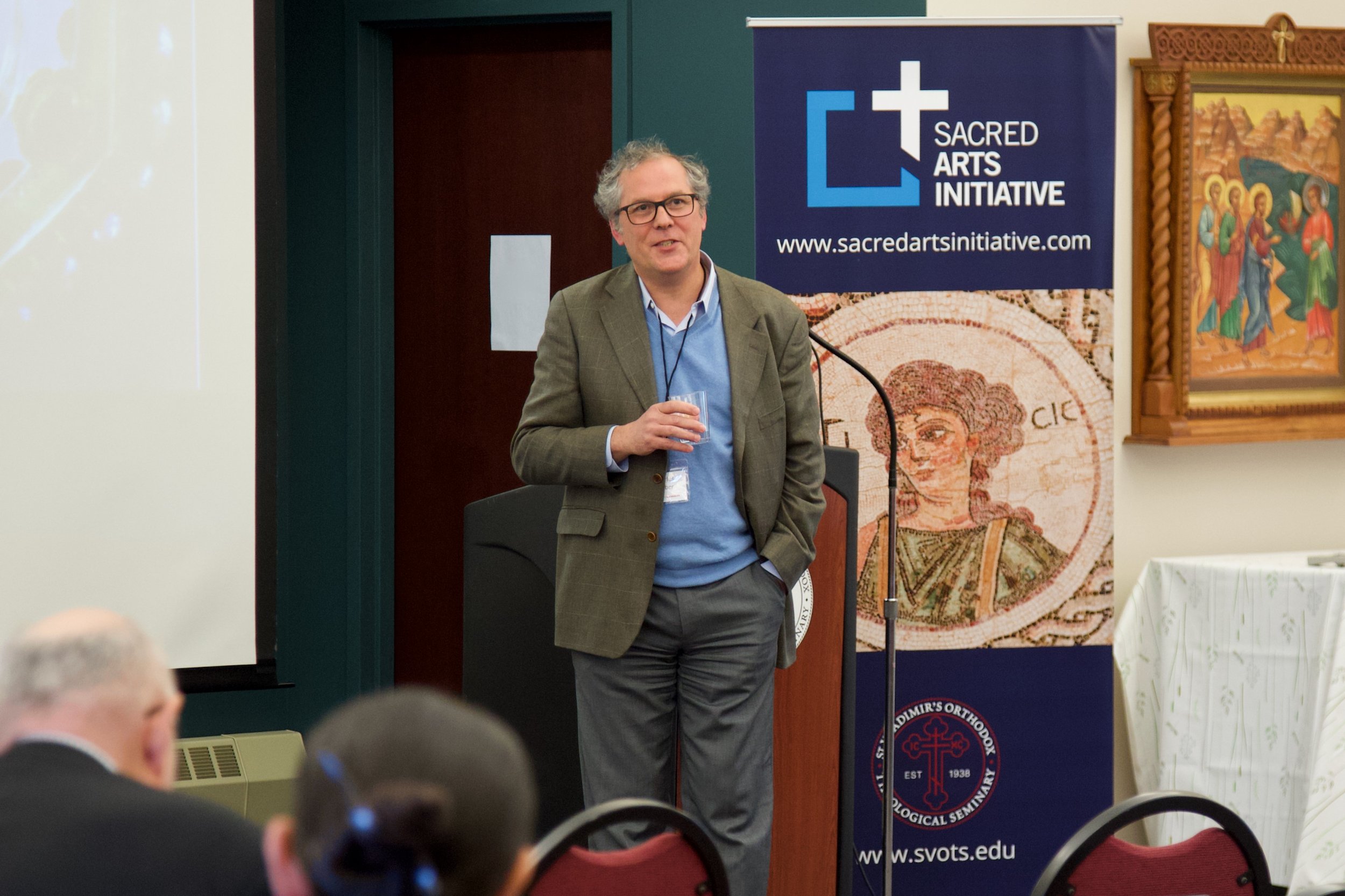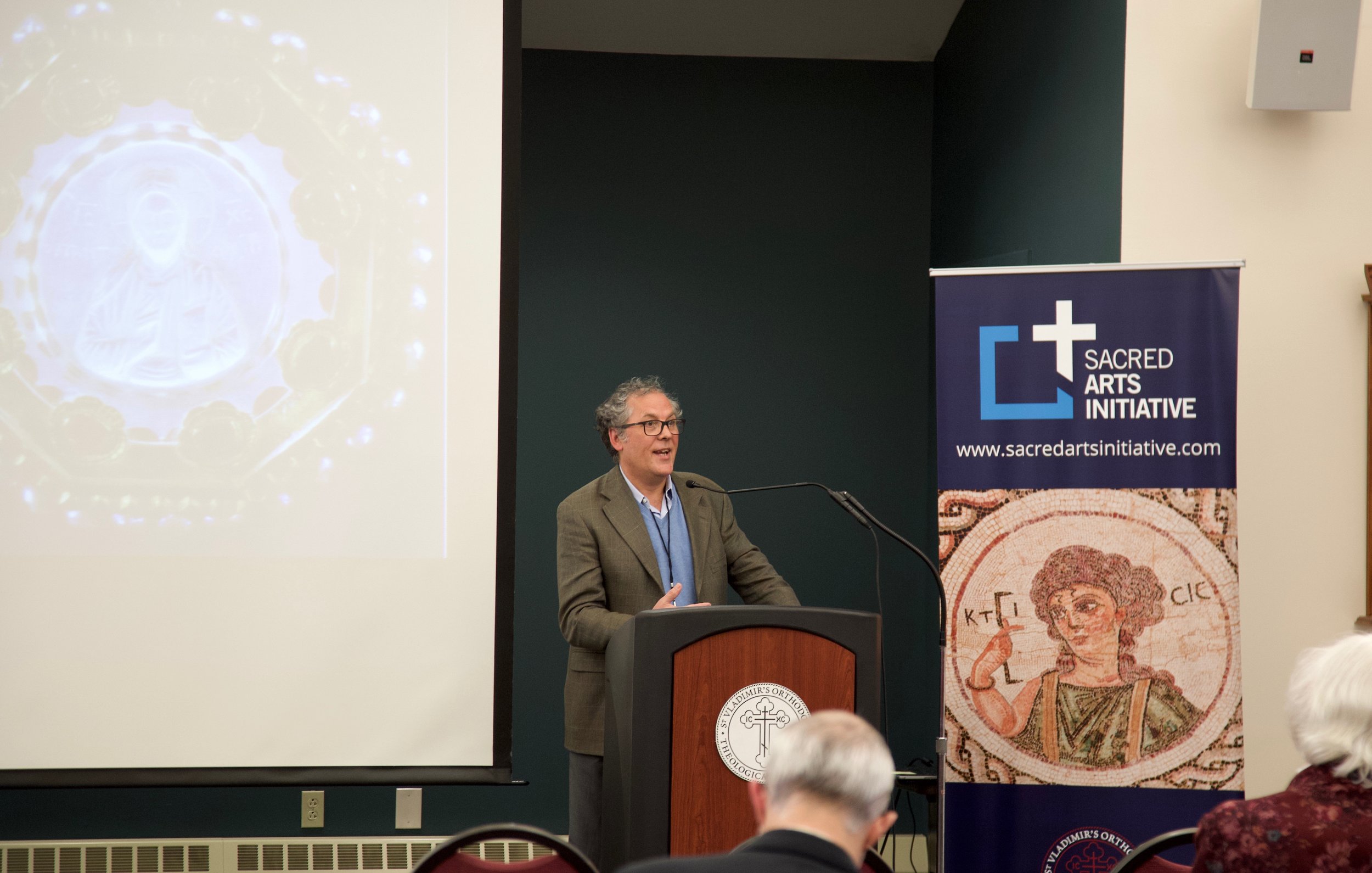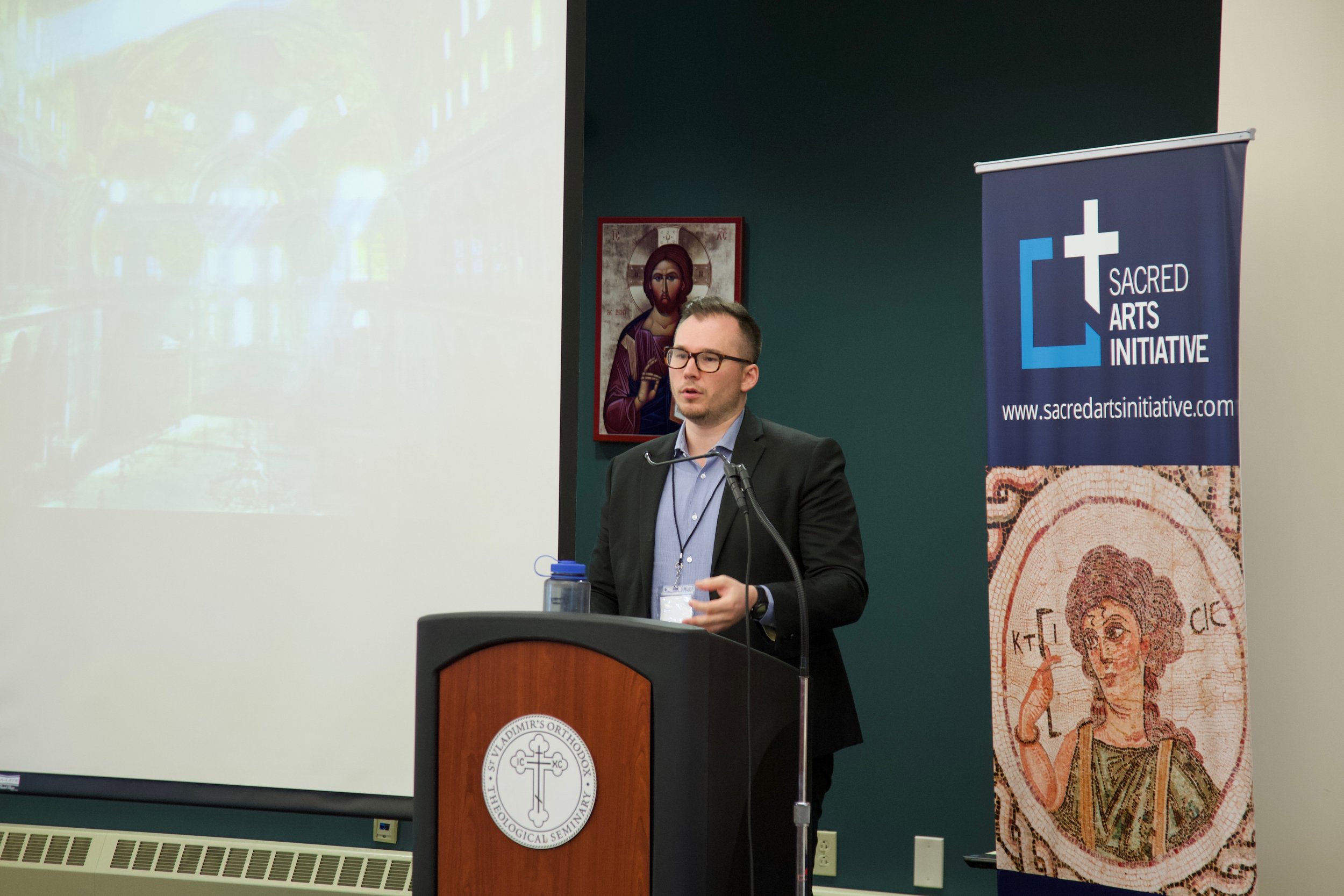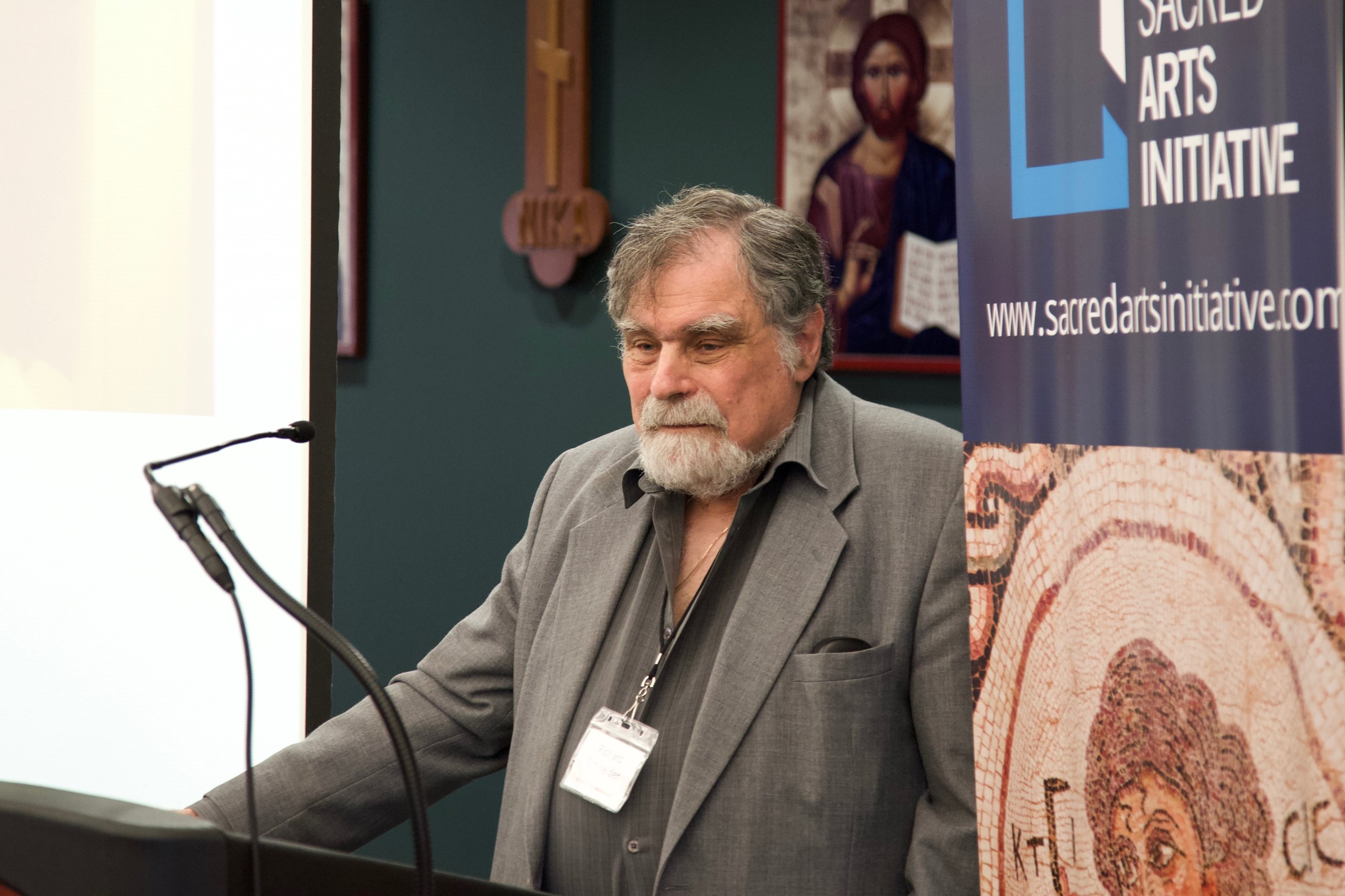Conference: May 8-11, 2019
Three years of groundbreaking exploration into the sacred arts culminated with Byzantine Materiality, a conference of the Sacred Arts Initiative, held on the campus of St. Vladimir’s Seminary from May 8-11, 2019. The Seminary’s Sacred Arts Initiative (SAI) began its historic study into the sacred arts back in 2016, thanks to funding by a grant from the Henry Luce Foundation. Byzantine Materiality built on a workshop held in September 2018 dedicated to the same theme.
“As an art historian, I’m accustomed to thinking about form and image in Byzantium,” said conference organizer Dr. Evan Freeman, “but this conference challenged us also to think carefully about the stuff of which objects were made, how materials mean, and the ways that matter and materials impacted people in Byzantium and its larger Mediterranean networks.”
The conference featured papers by eleven scholars who participated in the preliminary workshop. They were joined by additional scholars, graduate students, and seminary faculty who delivered shorter papers. The large and diverse lineup of conference speakers, representing such fields as art history, history, philosophy, and theology, included Charles Barber, Roland Betancourt, Peter Bouteneff, Annemarie Weyl Carr, Béatrice Caseau, Anthony Cutler, Mary K. Farag, Evan Freeman, Holger Klein, Joseph R. Kopta, Sean Leatherbury, James Magruder, Vasileios Marinis, Harry Prance, Stephanie Rumpza, Richard Schneider, Katherine Taronas, Laura Veneskey, Gary Vikan, and Alicia Wilcox Walker.
Conference speakers tackled the conference theme from several different angles. Paper topics explored the roles of particular materials in Byzantine art (e.g. wood, stone, gold, etc.); the materiality of built spaces (including churches, as well as synagogues, mosques, and domestic spaces); the sacred materialities of icons, the Eucharist, and relics; phenomenological and neurological experiences of the sacred; materialities across periods and cultures; and Byzantine theologies and philosophies of matter and form.
“The attention we devoted to materiality over these rich few days has been a vital antidote to dualism,” said Dr. Peter C. Bouteneff, the Seminary’s professor of Systematic Theology and director of the SAI. “It has been a pernicious tendency of human beings, throughout history, to privilege the spiritual world, and to vilify the material world. Christian theology, when it recalls the incarnation, has no dualist option.”
“The conviction, I think, is that the only way that God is reliably known is in and through the material world.”
The conference was attended by seminary faculty, students, and their families, as well as additional scholars, students, and members of the public from across the country. A third and final phase of the Byzantine Materiality project aims to publish a book with chapters based on conference papers in order to reach an even wider audience.
VISIT CONFERENCE WEBSITE
View full event photo gallery here.

Workshop: September 14-16,2018
From September 14-16, 2018, eleven scholars gathered on the campus of St. Vladimir’s Seminary to explore the theme of "Byzantine Materiality.” Organized by the Sacred Arts Initiative (SAI), which is funded by a grant from the Henry Luce Foundation, the workshop was the first part of a two-part interdisciplinary event exploring matter, materials, and materiality in Byzantine art and culture. Part two will be a public conference held May 8-11, 2019.
“Popular descriptions of Byzantium often emphasize the mystical and immaterial while overlooking the mediating role of matter implied by the Christian belief in the incarnation,” said Evan Freeman, seminary alumnus and Ph.D. candidate in the Department of the History of Art at Yale University. “At the same time, scholars have historically prioritized questions of form, iconography, and meaning in their study of Byzantine art and architecture. But as technology makes the human experience ever more digital and effectively immaterial, scholars across numerous disciplines—including Byzantine studies—have begun reconsidering the significance of matter and materiality.”

Freeman was the organizer for this workshop, and is one of the primary coordinators for the SAI along with Professors Richard Schneider, Tracy Gustilo, and Peter Bouteneff, the director.
The September workshop was closed to the public in order to give the eleven invited scholars who will be the main speakers at the May conference a chance to discuss drafts of their conference papers and to develop the conference theme as a group. Topics of discussion included Byzantine and ancient theories of matter and form; the use and significance of materials such as wood, stone, gold, and glass in ecclesiastical and other contexts; the roles of matter and materials in the Eucharist, icons, relics, and reliquaries; the rite for consecrating a church; sensory experiences of liturgy; and the neuroscience of viewing icons. At the May event, the scholars will present their papers to the public.
View full event photo gallery here.

